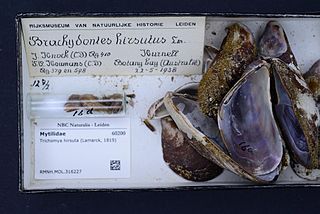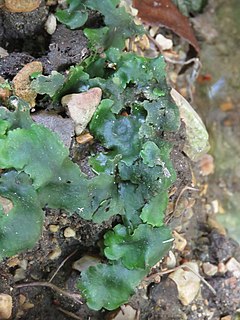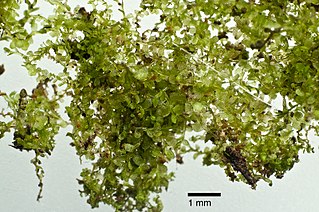
Water pollution is the contamination of water bodies, usually as a result of human activities, so that it negatively affects its uses. Water bodies include lakes, rivers, oceans, aquifers, reservoirs and groundwater. Water pollution results when contaminants are introduced into these water bodies. Water pollution can be attributed to one of four sources: sewage discharges, industrial activities, agricultural activities, and urban runoff including stormwater. It can be grouped into surface water pollution or groundwater pollution. For example, releasing inadequately treated wastewater into natural waters can lead to degradation of these aquatic ecosystems. Water pollution can also lead to water-borne diseases for people using polluted water for drinking, bathing, washing or irrigation. Water pollution reduces the ability of the body of water to provide the ecosystem services that it would otherwise provide.

Manilkara is a genus of trees in the family Sapotaceae. They are widespread in tropical and semitropical locations, in Africa, Madagascar, Asia, Australia, and Latin America, as well as various islands in the Pacific and in the Caribbean. A close relative is the genus Pouteria.
NVC community U6 is one of the calcifugous grassland communities in the British National Vegetation Classification system.

Industrial melanism is an evolutionary effect prominent in several arthropods, where dark pigmentation (melanism) has evolved in an environment affected by industrial pollution, including sulphur dioxide gas and dark soot deposits. Sulphur dioxide kills lichens, leaving tree bark bare where in clean areas it is boldly patterned, while soot darkens bark and other surfaces. Darker pigmented individuals have a higher fitness in those areas as their camouflage matches the polluted background better; they are thus favoured by natural selection. This change, extensively studied by Bernard Kettlewell, is a popular teaching example in Darwinian evolution, providing evidence for natural selection. Kettlewell's results have been challenged by zoologists, creationists and the journalist Judith Hooper, but later researchers have upheld Kettlewell's findings.
British NVC community MG2 is one of the mesotrophic grassland communities in the British National Vegetation Classification system.

Urban runoff is surface runoff of rainwater, landscape irrigation, and car washing created by urbanization. Impervious surfaces are constructed during land development. During rain, storms and other precipitation events, these surfaces, along with rooftops, carry polluted stormwater to storm drains, instead of allowing the water to percolate through soil. This causes lowering of the water table and flooding since the amount of water that remains on the surface is greater. Most municipal storm sewer systems discharge stormwater, untreated, to streams, rivers and bays. This excess water can also make its way into people's properties through basement backups and seepage through building wall and floors.

Marchantia polymorpha is a species of large thalloid liverwort in the class Marchantiopsida. M. polymorpha is highly variable in appearance and contains several subspecies. This species is dioicous, having separate male and female plants. M. polymorpha has a wide distribution and is found worldwide. Common names include common liverwort or umbrella liverwort.

Environmental effects of mining can occur at local, regional, and global scales through direct and indirect mining practices. The effects can result in erosion, sinkholes, loss of biodiversity, or the contamination of soil, groundwater, and surface water by the chemicals emitted from mining processes. These processes also affect the atmosphere from the emissions of carbon which have an effect on the quality of human health and biodiversity. Some mining methods may have such significant environmental and public health effects that mining companies in some countries are required to follow strict environmental and rehabilitation codes to ensure that the mined area returns to its original state.

Trichomya is a monotypic genus of marine bivalve molluscs in the family Mytilidae, the mussels. The only species is Trichomya hirsuta which is endemic to southern and eastern Australia. Its common names include the hairy mussel, the greenling and the kelp greenling.
L. bidentata may refer to:
Riccia crassifrons is a species of liverwort belonging to the family Ricciaceae.
Fissidens elegans is a species of moss belonging to the family Fissidentaceae.
Fissidens serratus is a species of moss belonging to the family Fissidentaceae.

Monoclea gottschei is a species of liverwort belonging to the family Monocleaceae.
Rhodobryum huillense is a species of moss belonging to the family Bryaceae.
Noteroclada confluens is a species of liverwort belonging to the family Noterocladaceae.
Plagiochila laetevirens is a species of liverwort belonging to the family Plagiochilaceae. It is common as an epiphyte in the dryland forests of Guyana.

Clasmatocolea vermicularis is a species of liverwort belonging to the family Lophocoleaceae.
Symphyogyna brongniartii is a species of liverwort belonging to the family Pallaviciniaceae.
Symphyogyna brasiliensis is a species of liverwort belonging to the family Pallaviciniaceae.









